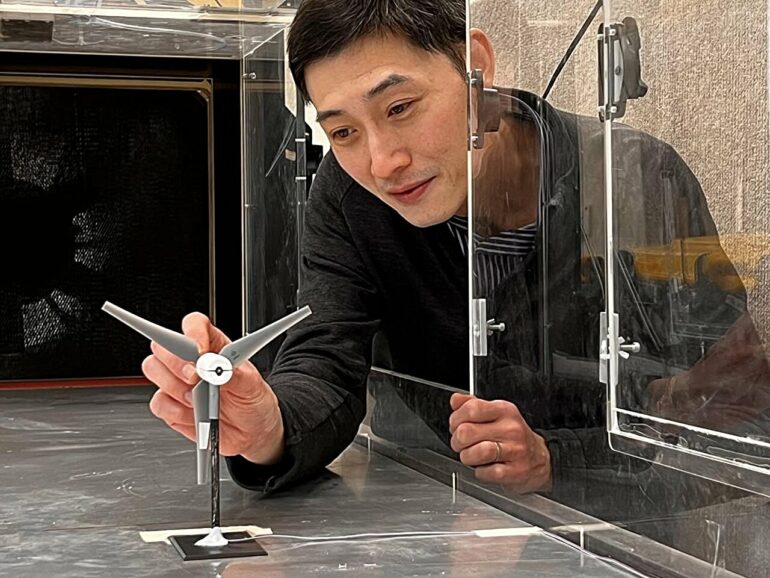The cost effectiveness of wind farms could be significantly improved by reducing the speed of wind turbines that are clustered together, which could improve their longevity and also reduce noise pollution.
A team of researchers from the University of Adelaide led by Dr. Rey Chin looked at the operation conditions of wind turbines, investigated those conditions relative to power output and performance, and how turbines interact with each other.
The study is published in the Journal of Wind Engineering and Industrial Aerodynamics.
“We have found that the efficiency of wind turbines arranged in wind farms in which turbines are clustered together can be improved by reducing the rotational speed of wind turbines at the front of the group,” said Dr. Chin, Senior Lecturer, School of Electrical and Mechanical Engineering, University of Adelaide.
“The power extracted from the wind turbine behind the first is significantly less—up to 30% of the turbine in front of it—because of the effect that the wake has.
“By reducing the rotational speed of the leading turbines, the speed of the ones behind can be increased so that all the turbines in a group spin at the same speed.
“This might have a small impact on the total energy generated by wind farms, but this is outweighed by important benefits, some of which are hidden but some, such as reduced noise pollution, are more obvious.”
There are currently 110 wind farms operating across all Australian states and territories, of which 31 wind farms, comprising a total of 599 turbines, are more than 15 years old.
A wind farm typically has a nominal design life of 20–30 years, though some wind farms are now designed for a minimum operating life of 30 years.
Wind turbines cost approximately AUD $7 million each to build and cost around half a million dollars to decommission.
“Up until now, wind turbine technology has been implemented quickly without much consideration for end-of-life planning,” said Dr. Chin.
“Wear and tear on a turbine can be significantly reduced by slowing down its rotational speed, and this will increase longevity and improve their cost effectiveness.
“Turbines are currently over-designed. By optimizing the performance of individual turbines clustered together the design and manufacturing process that goes into making turbines can be simplified and with significant cost savings.
“Noise pollution is the most significant negative aspect of wind farms and is often cited in opposition to proposed new farms,” said Dr. Chin. “Reducing the noise that farms make by minimizing the rotational speed of wind turbines makes this important source of green energy more acceptable for people living nearby.”
The team’s findings will be of great use for the wind farm industry to more carefully plan future farms using more accurate business case analyses.
More information:
Paul Bayron et al, Experimental analysis of co-rotating and counter-rotating tandem horizontal-axis wind turbine performance and wake dynamics, Journal of Wind Engineering and Industrial Aerodynamics (2024). DOI: 10.1016/j.jweia.2024.105840
Provided by
University of Adelaide
Citation:
Researchers discover surprising spin offs of slowing down wind turbines (2024, September 4)



